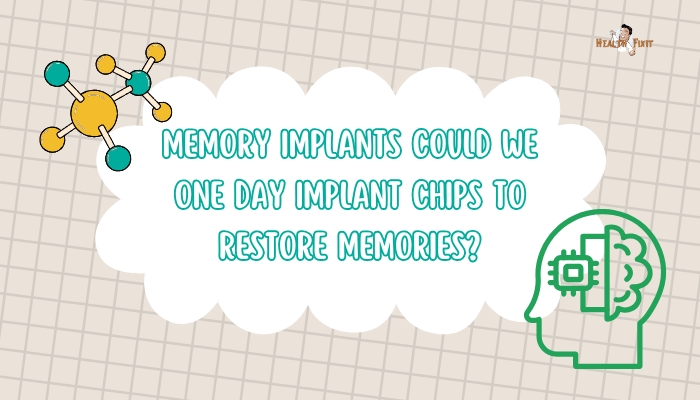Introduction
Heart disease remains a leading global cause of death. Many patients require heart transplants, yet donor organs are in short supply.
As waitlists grow, thousands die annually before a suitable organ can be found. Now, biomedical engineers and surgeons are turning to 3D printing.
By combining patient-specific cells, advanced bioinks, and sophisticated printers, they aim to produce functional heart tissues—and ultimately entire hearts. If they succeed, organ shortages for cardiac transplants could become a problem of the past.
While still in early stages, 3D-printed hearts show promise. Animal studies demonstrate partial viability and function in heart tissue patches.
Researchers refine vascularization and cell maturity, working to scale from small samples to full organs. This article explores the science behind bioprinting, the main obstacles, and the future outlook.
Could we soon see customized replacement hearts “printed” on demand? Read on to find out how engineering, cell biology, and surgical skill might converge to revolutionize transplant medicine.
Why 3D Print a Heart?
Transplant medicine has made major strides. Current heart surgeries can save lives and add productive years. But donor organs remain scarce, and immunosuppressive drugs carry risks. A 3D-printed heart made from a patient’s own cells would eliminate rejection and the need for lifelong immune management. It also addresses the fundamental supply issue: with enough cells and printing capacity, the supply of organs could be limitless.
Key Motivations
- Organ Shortage
- Demand for donor hearts far exceeds supply. 3D printing could supply new organs to meet the need.
- Demand for donor hearts far exceeds supply. 3D printing could supply new organs to meet the need.
- Reduced Rejection
- A heart grown from a patient’s own cells should fit seamlessly, reducing or removing immunosuppression.
- A heart grown from a patient’s own cells should fit seamlessly, reducing or removing immunosuppression.
- Personalized Design
- Each heart can be customized to the individual’s anatomy, improving surgical integration.
- Each heart can be customized to the individual’s anatomy, improving surgical integration.
- Lower Wait Times
- Instead of months or years on a waitlist, patients could receive an organ as soon as it’s printed and matured.
- Instead of months or years on a waitlist, patients could receive an organ as soon as it’s printed and matured.
While other routes—like mechanical pumps or xenotransplants—help some patients, a fully biologically compatible, lab-made heart would be the ultimate solution.
How 3D Bioprinting Works
3D printing for medical applications builds structures layer by layer, guided by a digital design. Traditional 3D printing uses plastics or metals. Bioprinting, however, combines living cells with supportive materials that mimic tissue properties.
Steps in Bioprinting a Heart
- Imaging and Modeling
- Doctors capture detailed scans (MRI or CT) of the patient’s heart shape and volume.
- Engineers create a 3D digital model.
- Doctors capture detailed scans (MRI or CT) of the patient’s heart shape and volume.
- Cell Sourcing and Expansion
- The patient’s own cells, often derived from a small biopsy or induced pluripotent stem cells (iPSCs), expand in lab conditions.
- Sufficient cell numbers must be cultivated—potentially hundreds of millions.
- The patient’s own cells, often derived from a small biopsy or induced pluripotent stem cells (iPSCs), expand in lab conditions.
- Bioink Preparation
- Cells are mixed with a hydrogel (collagen, alginate, or other polymers) that supports viability and growth.
- Growth factors or special molecules might be included to guide tissue maturation.
- Cells are mixed with a hydrogel (collagen, alginate, or other polymers) that supports viability and growth.
- Layer-by-Layer Printing
- A specialized printer extrudes the cell-laden bioink to form the heart’s structure, including chambers, valves, and major vessels.
- Careful layering ensures different cell types (e.g., cardiac muscle cells, fibroblasts, endothelial cells) are placed in correct regions.
- A specialized printer extrudes the cell-laden bioink to form the heart’s structure, including chambers, valves, and major vessels.
- Vascular Integration
- Complex vascular channels are crucial so that blood can flow and oxygenate the tissue.
- Some printers deposit sacrificial materials to create vessel networks that later dissolve, leaving open channels.
- Complex vascular channels are crucial so that blood can flow and oxygenate the tissue.
- Post-Printing Maturation
- The printed construct is placed in a bioreactor that provides nutrients, oxygen, and mechanical stimuli.
- Over days or weeks, cells adhere, differentiate further, and form functional heart tissue.
- The printed construct is placed in a bioreactor that provides nutrients, oxygen, and mechanical stimuli.
Achieving Vascularization
Hearts have dense blood vessels to supply oxygen to thick muscle walls. Without sufficient blood supply, cells in a bioprinted heart would quickly die. Thus, vascularization is a top challenge:
- Pre-Printing Channels
- Some labs use “fugitive inks” (like Pluronic F127) that print hollow channels. Later, these sacrificial inks are removed, leaving vascular-like tubes.
- Some labs use “fugitive inks” (like Pluronic F127) that print hollow channels. Later, these sacrificial inks are removed, leaving vascular-like tubes.
- Microfluidic Techniques
- Microfluidic devices can embed mini vasculature. Cells line the channels’ interior, forming living blood vessels.
- Microfluidic devices can embed mini vasculature. Cells line the channels’ interior, forming living blood vessels.
- Angiogenic Growth Factors
- Incorporating pro-angiogenic molecules (VEGF, FGF) encourages the formation of new blood vessels throughout the tissue.
- Incorporating pro-angiogenic molecules (VEGF, FGF) encourages the formation of new blood vessels throughout the tissue.
Even with these strategies, scaling from small patches to a full organ remains daunting. The heart’s microvasculature is extremely intricate, requiring advanced printing resolution and cell coordination.
Building Functional Tissue: The Role of Bioreactors
After printing, the newly formed heart tissue is not immediately transplant-ready. It must mature under conditions that mimic the body. Bioreactors provide:
- Nutrients and Oxygen: Perfusion systems pump culture media through the vascular channels.
- Mechanical Stimulation: The heart is a dynamic organ. Controlled stretching or rhythmic pulses help cells align and develop contractile strength.
- Electrical Cues: Cardiac muscle cells use electrical impulses to synchronize beating. Bioreactors may supply pacing signals.
This environment fosters tissue development. Researchers measure parameters like contraction force, electrical conduction, and viability to determine if the heart can pump effectively. Maturation can take weeks or months, depending on the size and complexity of the structure.
Milestones in 3D-Printed Heart Research
Early-Stage Cardiac Patches
Much progress started with simpler patches or scaffolds applied to damaged areas post–heart attack. These partial reconstructions can restore some function and limit scar tissue expansion.
- University of Tel Aviv (2019): Scientists printed a small 3D heart (a few centimeters) complete with cells and blood vessels, though it lacked robust pumping capability. This demonstration proved feasibility, but extensive refinement remains.
Valves and Blood Vessels
Creating functional valves is another stepping stone. Printed valves can be tested in heart models or animals, ensuring one-way blood flow. Some labs produce 3D-printed vascular grafts to replace diseased arteries—less complex than a whole organ but essential for forward progress.
Larger Animal Studies
Small hearts or large patches have been tested in pigs or sheep, whose anatomy is closer to humans. Improving survival and regaining partial pump function are key endpoints. Full-scale hearts for large animals remain largely experimental, focusing on short-term viability in specialized lab settings.
Potential for Elimination of Waitlists
If 3D printed hearts become clinically viable and mass-producible:
- Unlimited Organs
- Each patient’s iPSCs or adult stem cells could be used to print a custom heart.
- Each patient’s iPSCs or adult stem cells could be used to print a custom heart.
- No Tissue Rejection
- Autologous (self) cells minimize or remove the need for immunosuppressive regimens.
- Autologous (self) cells minimize or remove the need for immunosuppressive regimens.
- Predictable Surgery
- Surgeons would know exactly when the printed heart is ready, scheduling transplants in a controlled manner.
- Surgeons would know exactly when the printed heart is ready, scheduling transplants in a controlled manner.
The waiting list—currently a matter of life and death—would no longer limit access. However, large-scale deployment requires significant breakthroughs in reproducibility, cost reduction, and regulatory approval.
Overcoming Key Obstacles
Cost and Complexity
A single 3D-printed organ involves:
- Cell Harvesting and Expansion
- Custom Bioreactor
- Expensive Materials
- Highly Skilled Technicians
Currently, these steps are labor-intensive and costly. Economies of scale, improved automation, and standardized protocols are needed to make the approach feasible for hospitals worldwide.
Long Maturation Times
Growing functional tissue can take weeks or months. Organs must develop robust mechanical and electrical properties. Rapid printing alone does not solve the entire process—post-printing conditioning is equally important.
Regulatory Pathways
No 3D-printed organ has yet received full regulatory approval for human transplantation. Authorities (e.g., FDA, EMA) demand extensive data on safety, effectiveness, and long-term outcomes. This involves large animal trials and, eventually, carefully monitored human trials.
Ethical and Legal Questions
- Patent / Ownership: Who holds intellectual property rights over custom-printed organs?
- Access Inequality: Will these advanced procedures be limited to wealthy patients or well-funded healthcare systems?
- Data Privacy: Heart designs come from personal medical scans. Ensuring confidentiality is crucial.
Other Organs on the Printing Horizon
While hearts capture headlines, 3D printing extends to many potential organ systems:
- Kidneys: A top need due to widespread end-stage renal disease.
- Liver: High regenerative capacity suggests potential for partial or full 3D replacements.
- Lung Tissue: The alveolar structure is extremely intricate, but success could tackle advanced pulmonary disease.
- Pancreas: 3D-printed islets might help treat diabetes.
Each organ has unique structural, vascular, and functional challenges. Still, lessons from heart printing—like vascularization strategies—apply across different organ projects.
Clinical Trials and Timelines
A few labs and companies are planning or conducting early-phase trials using partial heart tissues (patches, valves) for heart failure patients. Full-organ printing is further out, but proof-of-concept steps show feasibility. Experts predict:
- 5–10 Years: More advanced patches, 3D-printed valves, and vessel grafts might become mainstream for partial cardiac repair.
- 10–20 Years: Experimental full hearts in large animals, possibly first-in-human attempts under strict regulation.
- Beyond 20 Years: Routine 3D printed heart transplants could be possible if all technological, manufacturing, and regulatory challenges are overcome.
These timelines remain fluid, subject to breakthroughs or unexpected setbacks. However, incremental progress is continuous.
Real-World Examples and Success Stories
Baby Fionn’s Skull Reconstruction
While not heart-specific, 3D-printed implants already improve patient outcomes. A famous case was an infant with cranial deformities, where surgeons used a 3D-printed bone scaffold for skull reconstruction. This success, among many, highlights the safety of bioprinted materials in certain scenarios. Translating such experiences to heart tissue is still more complex but shows the potential for 3D printing to become standard in medical practice.
Tissue Patches in Heart Attack Patients
Some experimental procedures have placed 3D-printed patches of cardiac muscle over scarred heart regions after heart attacks. Certain patients improved their heart’s pumping ability modestly and reported better exercise tolerance. Though these are small steps, they show that partial 3D-printed solutions can already enhance quality of life.
Synergy with Other Technologies
CRISPR and Gene Editing
In cases of genetic heart disorders, gene editing might correct underlying mutations in patient-derived cells before printing. This synergy ensures that newly formed tissue is free from inherited disease.
AI and Machine Learning
Machine learning can optimize printing parameters, cell densities, and growth factor schedules, accelerating the bioprinting process. AI algorithms can also analyze patient data (imaging, lab results) to create custom 3D designs more efficiently.
Robotic Surgery
Once a heart or patch is ready, robotic-assisted surgery might implant it with high precision, minimizing manual errors and reducing post-op complications.
Advice for Patients and Providers
For patients with severe heart disease or advanced heart failure:
- Stay Informed: Check reputable medical centers or clinical trial registries for updates on bioprinting research.
- Consider Trials: Under doctor guidance, joining an early-phase trial can offer cutting-edge options, though risks are involved.
- Explore Alternatives: Ventricular assist devices, mechanical pumps, or partial surgical repairs might bridge the gap until advanced printed organs are widely available.
- Lifestyle and Medical Management: Healthy habits, medication adherence, and regular follow-ups remain crucial.
Healthcare providers should track emerging data and watch for signals of technology readiness for clinical integration. Collaboration with engineering teams, tissue banks, and advanced imaging specialists is key.
Conclusion
3D-printed hearts offer a profound vision: a future where no patient dies waiting for a donor organ, and every transplant is a perfect match.
Achieving that vision requires addressing numerous technical, biological, regulatory, and ethical hurdles.
Scientists must master large-scale vascularization, refine bioreactors for organ maturation, and prove long-term safety in rigorous trials.
They also face cost and access challenges that could slow adoption.
Nevertheless, optimism runs high. Early forays into partial heart tissue patches, custom-printed valves, and more sophisticated vascular designs demonstrate real progress.
Over the next few decades, breakthroughs in printing resolution, biomaterials, and cell biology may converge, making entire bioengineered hearts feasible.
Such a paradigm shift would fundamentally reshape cardiac care, eliminating waitlists, curbing rejection, and offering renewed life to thousands who currently have few options.
While 3D-printed hearts are not yet a clinical reality, the ongoing momentum in labs worldwide suggests an eventual transformation of transplant medicine.
For now, patients with heart disease can take heart from incremental progress in 3D-printed tissues—paving the road toward a day when organ shortages vanish, replaced by lab-built hearts that beat with the rhythm of genuine human life.
References
- Sodian R, Schmitt RM, Boccardo ED, et al. Fabrication of a three-dimensional biodegradable scaffold for heart valve tissue engineering. Tissue Eng. 2000;6(2):183–188.
- Gaetani R, Doevendans PA, Metz CH, et al. Cardiac tissue engineering using tissue printing technology and human cardiac progenitor cells. Biomaterials. 2012;33(6):1782–1790.
- Maiullari F, Costantini M, Blitterswijk CV, et al. A multiscale 3D bioprinting approach for heart tissue engineering. ACS Appl Mater Interfaces. 2018;10(27):21698–21706.
- Noor N, Shapira A, Edri R, et al. 3D printing of personalized thick and perfusable cardiac patches and hearts. Adv Sci. 2019;6(11):1801796.
- Zhang J, Zhu W, Qu X, et al. Direct 3D bioprinting of prevascularized tissue constructs with functional microvessels. Nat Biotechnol. 2016;34(3):312–319.
- Mirdamadi E, Tashman JW, Shiwarski DJ, et al. 3D bioprinting and its applications in tissue engineering. Artif Organs. 2020;44(4):293–307.
- Park SE, Georgescu A, Huh D. Organoids-on-a-chip. Science. 2019;364(6444):960–965.
- Murphy SV, Atala A. 3D bioprinting of tissues and organs. Nat Biotechnol. 2014;32(8):773–785.
- Tijore A, Irvine SA, Sarig U, Mhaisalkar P, Baisane V, Venkatraman S. Contact guidance for cardiac tissue engineering using 3D bioprinted gelatin patterned hydrogel. Biofabrication. 2018;10(2):025003.
- Lee JM, Sing SL, Zhou M, Yeong WY. 3D bioprinting processes: A perspective on classification and terminology. Int J Bioprint. 2018;4(2):151.
- Jodat Y, Kang MG, Kiaee K, et al. Geometric considerations in 3D bioprinting. Tissue Eng Part B Rev. 2020;26(3):164–176.







